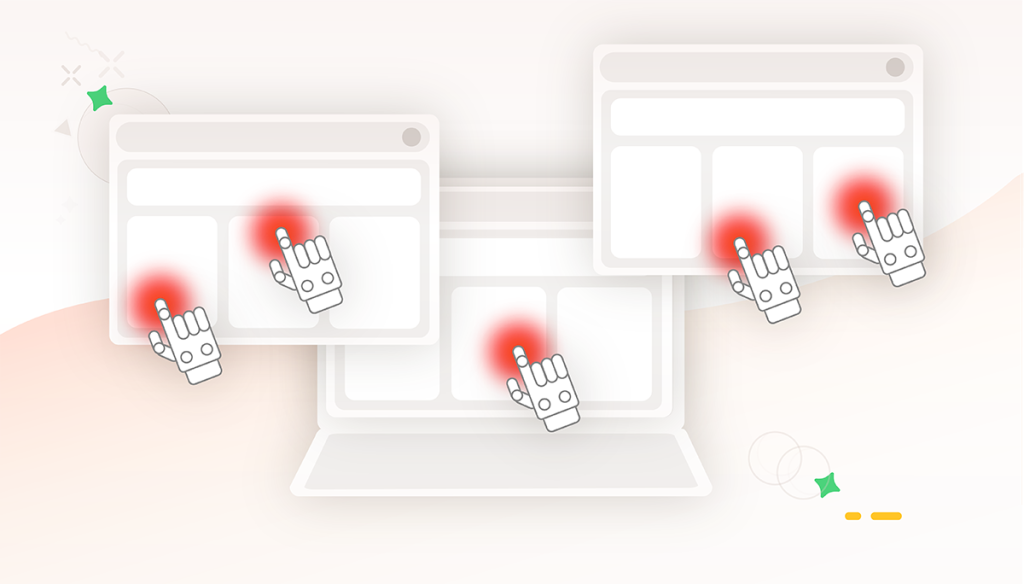As a business owner, how many emails about your SEO do you get each day? How many offers of backlinks and domain authority building do you get every week?
Come to think of it, do you even notice any more?
A crucial part of SEO strategy is the building of backlinks. The whole point is that the search engines see that you have loads of inbound links and… Oh hey! This site must be relevant.
Ping! Page one.
That’s the theory.
But the reality?
This world of bad backlinks and outsourced link building has created a perfect storm for ad fraud and click fraud.
Allow me to explain….
The backlinks industry
There are approximately 1.89 billion websites online in 2021, and that number grows by around 500,000 every day.
If you’ve ever done backlink building, you might have encountered some of these sites.
Many of them are pretty crappy, often a basic WordPress site, filled with badly written repackaged content. They’re often designed specifically to host backlinks and display ads.
And if you’ve ever dug into these sites, you might have noticed that some of them have suspiciously high domain authority and traffic that even some established businesses can’t touch.
To add to the eyebrow raising shadiness of it all, many of these high DA and high traffic sites are under a year old. Some of them are substantially less than that.
So how do they do it?

The World Of Inflated Domain Authority
Domain authority has become one of the focus metrics for the world of backlink building. But as we’re about to see, gaming domain authority has pretty much made it an irrelevance.
Inflating your domain authority is super easy. You can literally get your website to over DA50 for around $10.
Don’t believe me? Check out Fiverr and search for Domain Authority.
It takes a few weeks for your inflated DA to show up on sites like Moz, and then crappy site owners can start to sell backlinks from their sites.
The problem is that domain authority itself is actually a useless metric. It’s simply an algorithm, created by Moz – a third party, based on what Google probably does to assess link relevance and rank search results.
It’s basically a best guess for how Google calculates page rank.
But with a high DA, site owners often charge inflated prices for guest posts and backlinks because, well… Other people think the domain authority matters. In short, bad backlinks are still valid in the eyes of business owners and SEO marketers.
However the site owners in the know understand that the most important metric for winning high paying guest posts is site traffic. And there’s a way to game that too.
Paying for traffic
The easiest way to speed things along for unscrupulous website publishers is to pay for some traffic.
There are loads of sites where you can source ‘genuine’ traffic, even specifically ‘genuine USA’ or ‘genuine German’ traffic. Again look at Fiverr or simply search for ‘buy USA traffic’.
But, I hear you ask, how can you source genuine traffic in bulk from a specific location?
Well, spoiler alert…
It’s all bots.
Paid traffic is bot traffic or click farm sourced traffic.
And if you’re paying for traffic, you’d might as well make some money back by monetising your site. And what’s the easiest way to do that?
Easy money for shoddy publishing
The quickest and easiest way to monetise a website is to sign up for an ad platform and host banner ads, pop-ups and all manner of other display advertising.
The process to sign up for Google Adsense is pretty simple. Register your site and the Google team will analyse it, and, if it’s up to standard, it will be able to host ads in days.
Not every site gets accepted for Google’s Adsense, as you do need to have a decent amount of content and at least some traffic. The site does also need to be user friendly and generally pass the human user test.
These days you also need to have ads.txt on your site, although this can be added after you’ve been accepted.
But, getting a crappy site on Adsense is just a matter of ticking a few boxes. Other ad platforms are even easier and do almost no tests.
Then, with these ads in place, load up on ‘genuine traffic’ and watch your ad revenue come flooding in. What’s a bit of casual click fraud to bang up your site revenue?
Where are your ads being displayed?
And this is one of the big problems for digital marketers and business owners. Display ads, including banners and videos, can be generating impressions and clicks on sites with thousands of visitors.
But a large slice of this traffic isn’t from genuine human site visitors.
With these low quality sites hosting thousands of visitors a day, chances are that if you’re running display or video ads you’re seeing a chunk of bot traffic from them.
Sites built for bad backlinks are simply money machines for lazy publishers. Click fraud might not be the end goal, but by virtue of their dependence of low quality traffic, it’s an inevitability.
Although the high DA of these sites might, in some way, help you nudge your domain authority up, the negative impact outweighs the benefits.
But surely quality publishers can be trusted… Right?
As ad fraud expert Dr Augustine Fou points out, even good publishers have bad bots. Although these are very unlikely to be paid traffic, there are bots that can misrepresent their origin or purpose, data scrapers and a multitude of other shady uses.
How to avoid bad backlinks
Business marketers looking to build their visibility and search rankings do need to focus, to a degree, on backlinks.
But the best thing to do is to check the quality of a website. Is the content genuinely useful and readable, or is it just some re-spun generic content that barely makes sense?
Is the site more than a year old? This doesn’t necessarily mean it’s quality, but it can be an indicator that the site is actually serving a purpose and has had time to build up genuinely ‘genuine organic traffic’.
And is the site packed full of ads? Yes, sites that offer backlinks are well within their rights to monetise their content. Look at sites like Forbes, Search Engine Journal and Business Insider – there are ads everywhere.
But some sites that are created purely to game the domain rankings are packed full of ads from multiple platforms, plus low quality content that is actually useless save for building a bad backlink.
Avoid bot traffic from low quality sites
If you’re running Google Ads display campaigns, you can view and edit your ad placements. We highly recommend reviewing your ad placements regularly and keeping an eye on the traffic you’re getting.
Watch out for spikes in traffic volume, variable bounce rates, unusual geo activity and specific websites providing a disproportionate volume of views.
If you spot a site that you think looks a bit strange, check it out and if you think it’s likely a site for bad backlinks, pop it in your exclusion list.
Minimising bad bots clicking on your ads is an ongoing task and one that marketers need to factor in.
Using ClickCease automates your bot prevention, blocking paid traffic but letting the genuinely genuine traffic in.
By protecting your Google Ads with ClickCease, you’ll get additional insight into your ad traffic including alerts when bots are clicking or viewing.
Check your Google Ads campaigns for bots with our free audit today.
